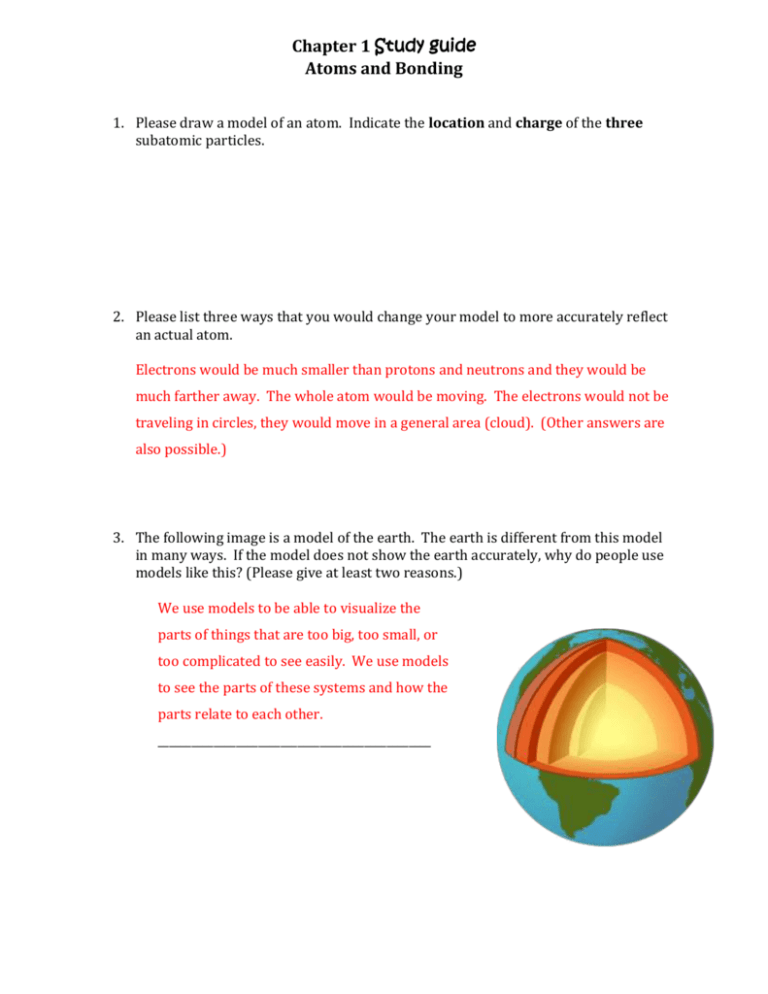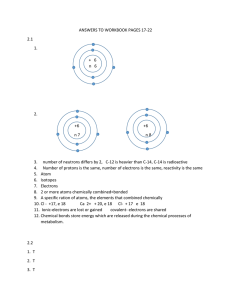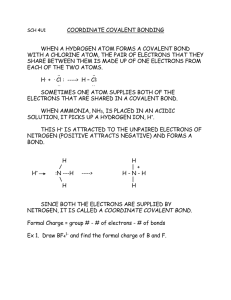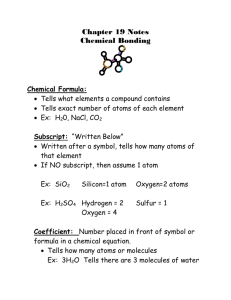Chapter 1 Study Guide KEY
advertisement

Chapter 1 Study guide Atoms and Bonding 1. Please draw a model of an atom. Indicate the location and charge of the three subatomic particles. 2. Please list three ways that you would change your model to more accurately reflect an actual atom. Electrons would be much smaller than protons and neutrons and they would be much farther away. The whole atom would be moving. The electrons would not be traveling in circles, they would move in a general area (cloud). (Other answers are also possible.) 3. The following image is a model of the earth. The earth is different from this model in many ways. If the model does not show the earth accurately, why do people use models like this? (Please give at least two reasons.) We use models to be able to visualize the parts of things that are too big, too small, or too complicated to see easily. We use models to see the parts of these systems and how the parts relate to each other. _________________________________________________ 4. Draw an electron dot diagram (Lewis dot) for the following elements: a. Sulfur S with 6 dots b. Rubidium Rb with 1 dot c. Iodine I with 7 dots 5. One of these compounds is formed by an ionic bond, and the other is formed by covalent bonds. Please use the space below to draw the electron dot diagrams of the elements involved in each compound. Use your drawings to draw a conclusion on which bond is used for each molecule. In the lines below, present your conclusion for each molecule as well as the reasoning behind the decision. CaCl2 CF4 CF4: This molecule is held together with covalent bonds. A covalent bond happens when electrons are shared, and by sharing electrons the Carbon and Flourine atoms all achieve stability, by gaining 8 valence electrons each. This answer should also explain using the reasoning that non-metals are bonding together. CaCl2: This compound is held together with an ionic bond. It is non-metal Cl atoms bonding with a metal Ca atom. The Calcium atom loses 2 electron (making it a +2 ion) and it is then attracted to the two -1 ions formed when the Chlorine atoms gain those lost electrons. This attraction keeps the compound together. ___________________











